Help! My Dog Bit Me When I Tried To Move Him!
Training your dog to behave well can be a challenge. Some dogs will growl, snap at the air, or bite when you try to move them. Minimizing aggressive responses in your dog is vital to a happy, healthy life for you and him.
It’s happened to me before: when he was about twelve months old, my dog bit me when I tried to move him. I implemented training cues to prevent the issue from happening again. Read on for a definitive guide to stopping aggressive responses from your dog when you try to move him.
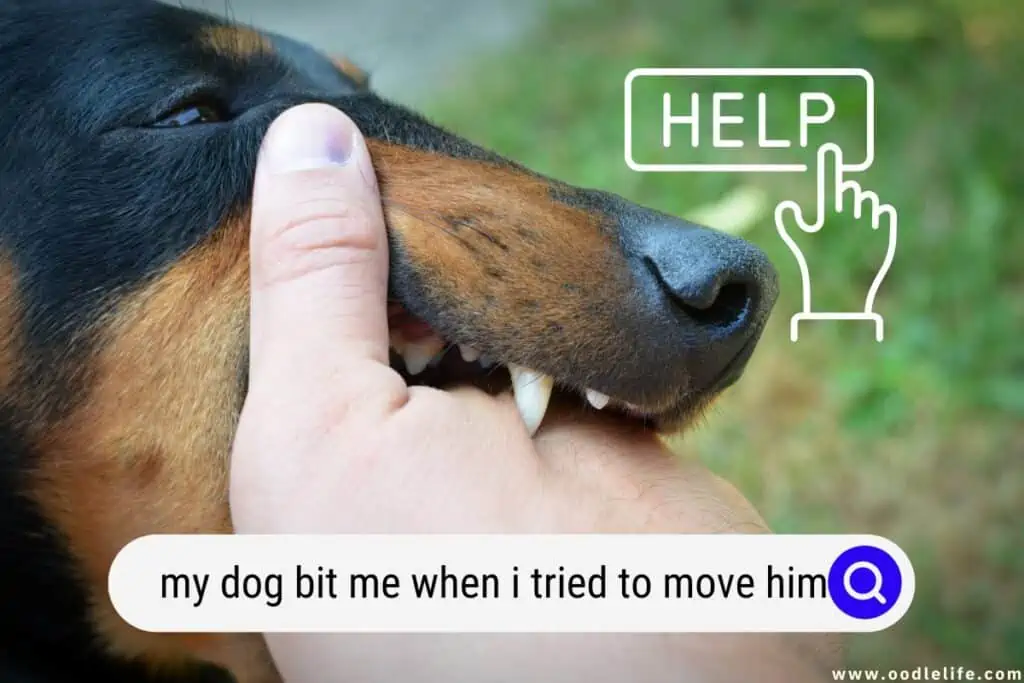
Why Teach My Dog to Move?
You may be wondering why you should bother to train your dog to move instead of just physically moving him. After all, it’s not acceptable behavior that my dog bit me when I tried to move him.
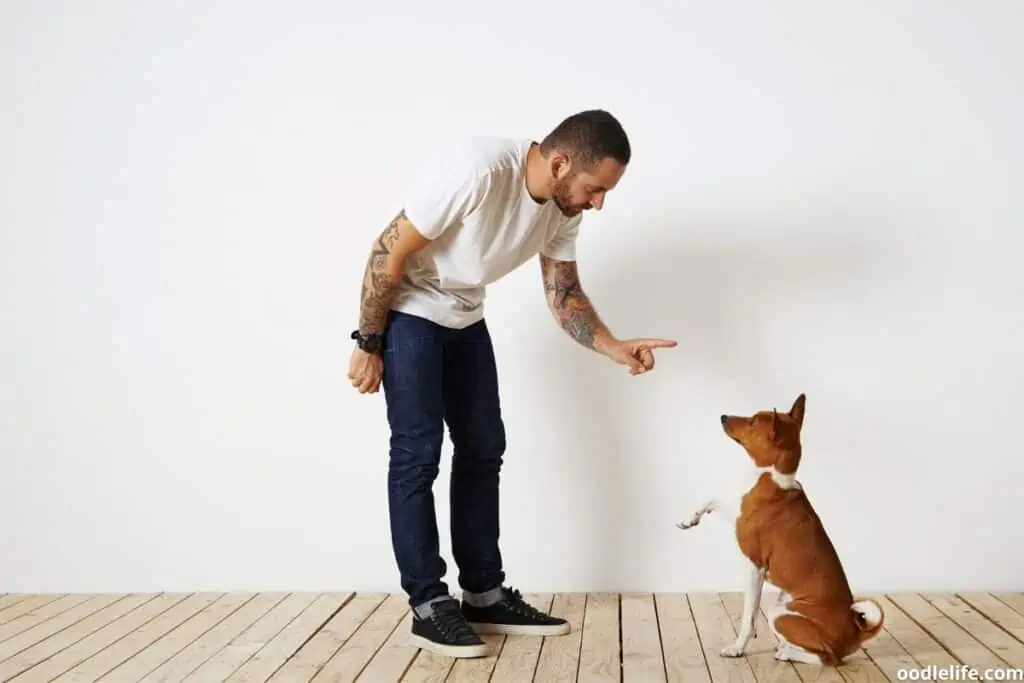
Yes, that’s true. But, you can’t explain your reasoning to him, so a training solution that he can understand will ultimately make you both happier. There are several ways to motivate your dog to move on command and avoid the need to pick him up to move him.
First I’ll explore what may be leading your dog to show aggression when you try to move him. Then I’ll give some options to help train your dog to move when you want him to.
Reasons for Aggression
Several possible scenarios could trigger your dog to be aggressive when you try to move him, including:
- Age and ailment
- Low tolerance threshold
- Fear and anxiety
Age and Ailment
If your dog previously had no problem with you picking him up to move him, he may have some underlying condition causing pain or discomfort.
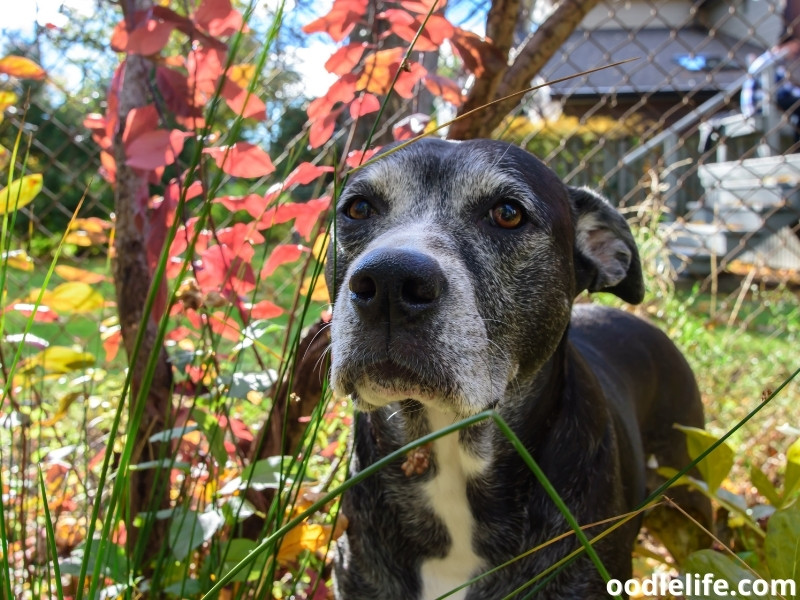
If your dog is in the latter years of his breed’s typical life span, he may be experiencing arthritis or another condition common to aging dogs.
Likely, he doesn’t want to hurt you when you try to pick him up. Dogs react according to instinct. So, if something hurts, he’ll respond to protect himself.
Don’t take it personally in this case.
A visit to your vet can rule out injuries or conditions like arthritis.
Low Tolerance Threshold
Some dogs don’t like being handled by people.
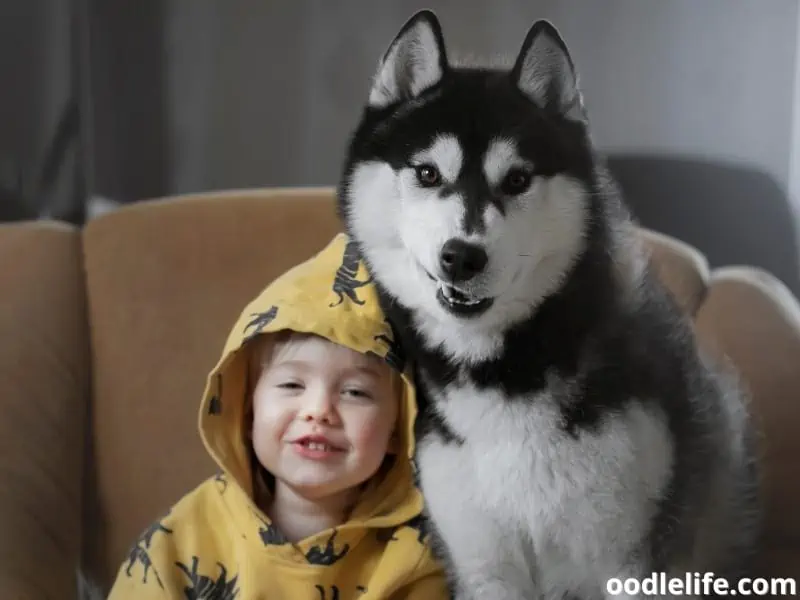
A dog may have been handled too much by children or adult owners. I tell my children frequently that when our Dachshund is napping, they must leave him alone.
Sometimes they can’t resist the urge to grab and hold him when he walks by. I get it. He is an adorable, fuzzy friend.
However, I warn them he will grow intolerant of this behavior and resort to snapping at them to make them stop.
Insufficient rest can make a dog ornery toward being moved. He may have learned to show aggression to keep people away if he doesn’t get all the rest he needs. A rescue dog may need time to acclimate to his new surroundings.
This is especially true for a dog who moves from a quiet environment to a bustling home full of people.
Some dogs have a low tolerance by nature. They don’t like being forced to do what their owner wants.
Fear and Anxiety
A dog who is afraid to be handled by humans due to past abuse may use aggression to keep you away. When you rescue a dog, be sure you get as much information as you can about him.
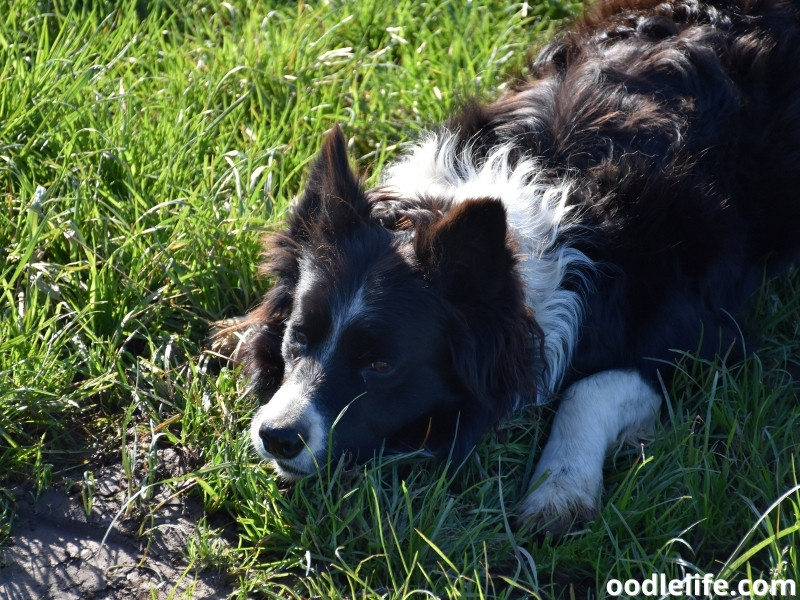
Helping an anxious dog to feel loved and secure enough to come out of his shell is incredibly rewarding. However, handling a fearful or anxious dog is a special circumstance requiring extra care and patience to train.
You may need to consult a professional dog trainer to help you with an exceptionally fearful or anxious canine.
Options for Solutions
Reading the above section helps me to know some possible reasons why your dog might bite when you try to move him. Let’s assume that you have a typical dog on your hands.
Investigate Your Dog’s Health
Understandably, your dog might growl or snap at you if he experiences pain when you pick him up. When this is new behavior for your dog, take it as a sign that he may need to see the vet.
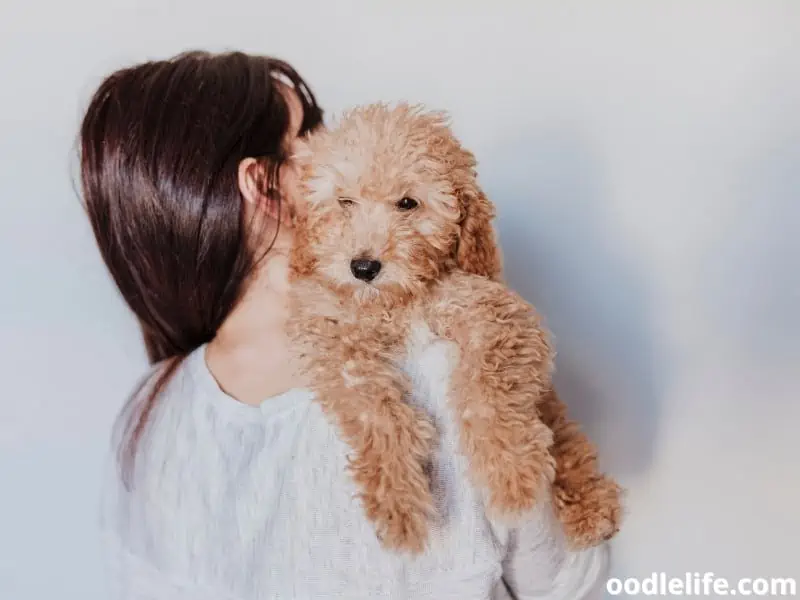
Once you’ve ruled out illness as a reason for the behavior, you can move on to some training solutions.
Prioritize Rest Time for Your Dog
It is fair for your dog to be intolerant of constant interruption to getting enough rest. You can work on building a daily routine that includes enough time for peaceful, steady sleep. Teach everyone the old saying to let sleeping dogs lie.

This involves training the humans in the household more than the dog. You may need to give him nap times in his crate. But make it clear to everyone that he is not to be disturbed during certain hours.
Training Strategies
There are several ways to teach your dog to move when you want him to move without having to handle him. Choose a method that will work for your situation.
Find what motivates your dog. Dogs love treats, generous praise, massages, or some playtime. Find his favorite reward to have him hopping up on command before you know it.
Each of these methods employs positive reinforcement. Rewarding desired behavior is a powerful tool for helping your dog develop good behavior and skills.
Teach an “Off” Cue
Regular puppy training usually includes an “off” cue. You use “off” when you want the dog to stay away from an object or cease jumping on you.
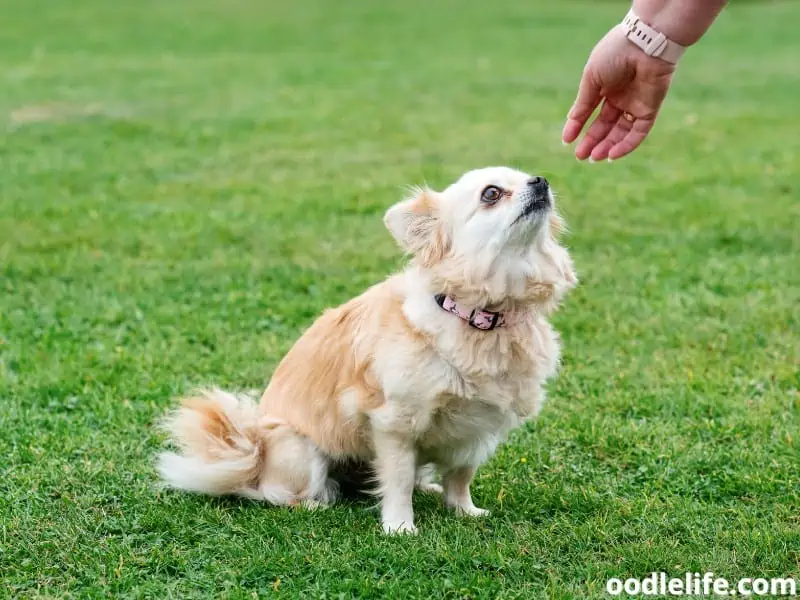
Extend the use of your off cue to keep him off the furniture. “Off” works better than using the word “down” because that usually already means “lie down.”
Use a House Lead
One way to train a dog to move on command is to use a house lead. It allows you to exert gentle physical control from a distance.
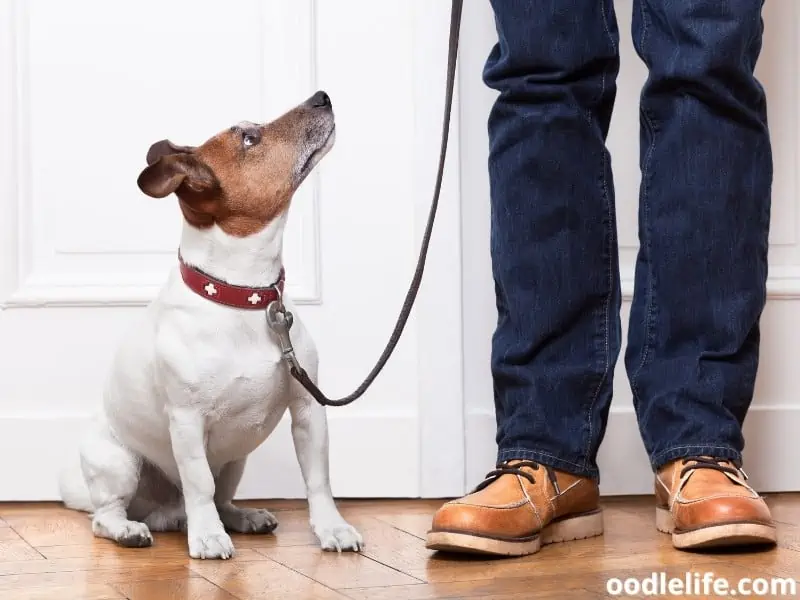
Whenever you are at home with your dog, attach a lead to his collar. When you see him resting, pick up the line and ask him to move. Use an upbeat and enthusiastic tone.
If he moves at your verbal command, reward him generously!
When he doesn’t move with verbal commands alone, gently tug on the lead to show him that you want him to move. Happily reward him when he complies.
Repeat this process until your dog moves at your verbal command. When the behavior is well established, eliminate the line.
Lure With Treats
You can forgo the house lead and just use treats to lure your dog off the couch. This works well with treat-motivated dogs.
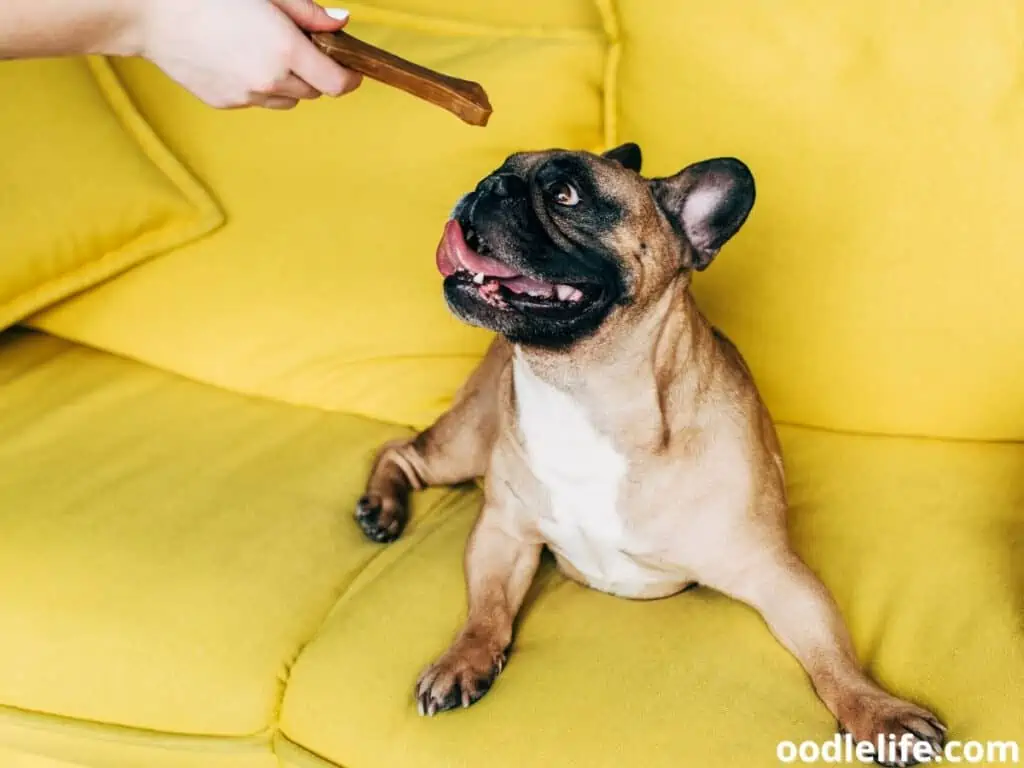
The trick here is weaning off the treat reward so you get the behavior without constant snacking. Phase out the treats, but always reward a good dog with praise.
Tips for Success
Training a dog involves training ourselves in new behaviors too. You may spend time working out a solution and then forget to implement your plan.
Here are a few tips to help you succeed:
- Leave equipment where you’ll see it as a reminder to use it. Put a treat jar in the living room where you’re training your dog to move off the furniture. Put the house lead where you’ll see it when you get home from work.
- Use technology to your advantage. Set reminders on your phone or Alexa device.
- Practice the skills you want your dog to learn. Make a game of these sessions and have fun.
With some time and patience, you won’t be saying, “My dog bit me when I tried to move him!” You’ll be telling all your friends you have the best dog ever.